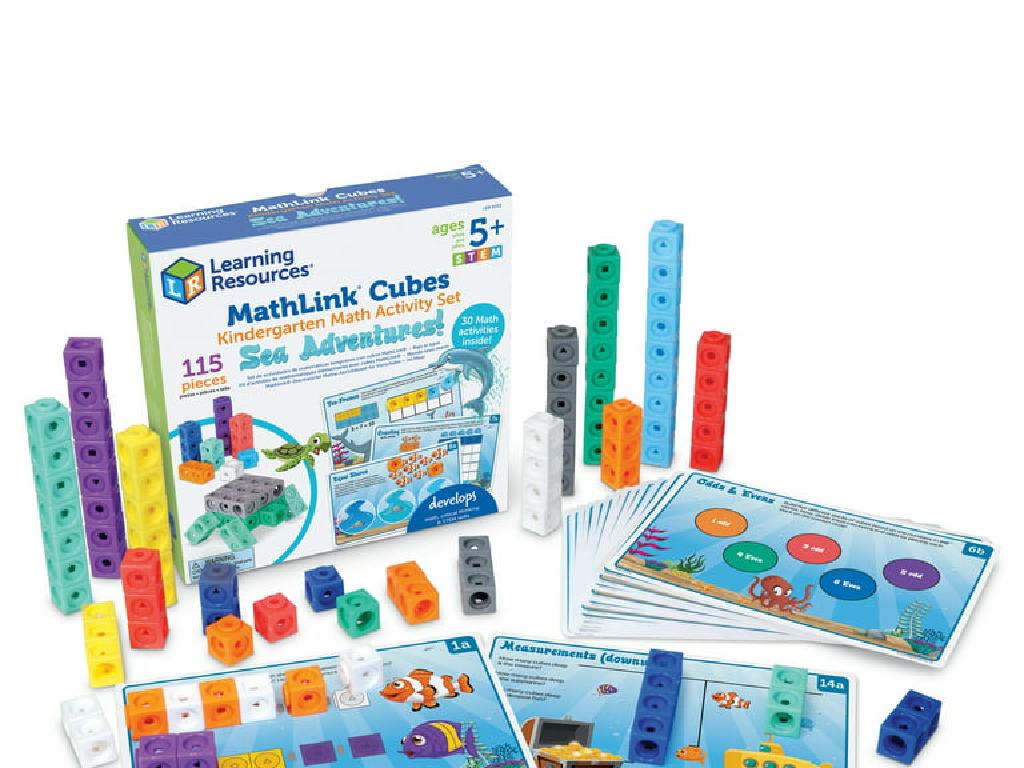Introduction To Static Electricity And Charged Objects
Subject: Science
Grade: Third grade
Topic: Electricity
Please LOG IN to download the presentation. Access is available to registered users only.
View More Content
Today’s Adventure: Static Electricity!
– Discovering static electricity
– Static electricity is the build-up of electric charge on a surface
– What is electricity?
– Electricity is energy that powers our lights and gadgets
– Daily uses of electricity
– It lights our homes and runs our toys
– Fun facts about static
– Did you know lightning is a form of static electricity?
|
Begin the class by introducing the concept of static electricity as a type of electricity that stays in one place. Explain that electricity is a form of energy that we use every day to power things like lights, computers, and even our toys. Discuss with the students how electricity is an essential part of our daily lives and give examples such as turning on a light or playing with an electronic toy. To make the lesson engaging, share a fun fact about static electricity, like how lightning is a large-scale example of static discharge. Encourage the students to think about and share their experiences with static electricity, like hair standing up after taking off a hat or the shock from touching a doorknob.
Exploring Static Electricity
– What is static electricity?
– It’s an invisible force that can make things move without touching them!
– Static charge buildup
– Like when you rub a balloon on your hair and it sticks to the wall.
– Static electricity examples
– Lightning is a powerful example of static electricity.
– Observing static in action
– We’ll do fun experiments to see static electricity!
|
This slide introduces the concept of static electricity to third-grade students. Begin by explaining static electricity as an invisible force that can cause objects to attract or repel each other without direct contact. Use the example of a balloon sticking to a wall after being rubbed on hair to illustrate the buildup of electric charge. Discuss everyday examples, such as lightning or the shock you feel when touching a doorknob after walking on carpet. Plan simple, safe experiments for the class to observe static electricity in action, such as using a comb through hair or separating salt and pepper with a charged spoon. The goal is to spark curiosity and provide a foundation for understanding the basics of electricity.
Charged Objects and Static Electricity
– Understanding positive & negative charges
– Like charges repel, unlike charges attract
– How do objects get charged?
– Rubbing certain materials transfers electrons
– Materials that cause static electricity
– Balloons, wool, and plastic rods are common
– Exploring static with simple experiments
– Try rubbing a balloon on your hair and see what happens!
|
This slide introduces the concept of static electricity to third-grade students by explaining the basics of charged objects. Begin by discussing positive and negative charges, emphasizing that similar charges repel each other while opposite charges attract. Explain that objects become charged through the transfer of electrons, which can happen when two different materials are rubbed together. Provide examples of materials that are known to create static electricity, such as balloons, wool, and plastic rods. Encourage students to explore static electricity through simple experiments, such as rubbing a balloon on their hair and observing how it can stick to walls or pick up small pieces of paper. This hands-on approach helps solidify their understanding of the concepts.
Experiment: Static Electricity with a Balloon
– Rub a balloon on your hair
– Bring the balloon near paper bits
– Watch the paper bits jump to the balloon!
– Observe how paper bits react
– Learn how static electricity works
– Static electricity makes the balloon attract things
|
This slide introduces an interactive class experiment to demonstrate static electricity. Students will rub a balloon on their hair, which transfers electrons and charges the balloon. When they bring the charged balloon close to small pieces of paper, they’ll observe the paper bits being attracted to the balloon. This activity visually shows how static electricity works, creating an engaging learning experience. The teacher should ensure safety and assist students as needed. Prepare for possible questions about why the balloon attracts the paper and discuss the concept of charged objects and their interactions.
Why Does Static Electricity Happen?
– Electrons and static electricity
– Tiny particles called electrons cause static electricity.
– Transferring electrons creates charge
– Objects can gain or lose electrons and get a static charge.
– Conductors vs Insulators
– Conductors let electricity flow; insulators do not.
– Exploring static with experiments
|
This slide introduces the concept of static electricity to third-grade students by explaining the role of electrons. Electrons can move from one object to another, and when they do, they can leave an object with a positive or negative charge, resulting in static electricity. Students will learn the difference between conductors, which allow electrons to move freely, and insulators, which keep electrons in place. To make this concept tangible, consider demonstrating with simple experiments such as rubbing a balloon on hair or using a plastic comb on paper bits. These activities will help students see static electricity in action and understand the concepts of electron transfer and charged objects.
Safety and Static Electricity
– What is static electricity?
– Static electricity is when objects have extra electrons and create a ‘spark’.
– Static’s role in daily life
– Static can stick balloons to walls or make your hair stand up!
– Safety tips for static
– Don’t touch metal objects after walking on carpet; keep flammable gases away.
– Discharging static safely
– It’s important to avoid shocks or fires by getting rid of extra static in a safe way.
|
This slide introduces students to the concept of static electricity and its relevance to safety in everyday life. Begin by explaining static electricity as the build-up of electric charge on the surface of objects, which can cause a spark when they come into contact with another object. Illustrate with everyday examples like balloons sticking to walls or hair standing on end. Emphasize safety by discussing tips such as avoiding metal objects after walking on carpets or being careful around flammable substances. Explain the importance of discharging static electricity safely to prevent accidental shocks or potential fires, teaching them practical ways to do so. This will help instill a sense of caution and responsibility when dealing with electricity.
Class Activity: Static Electricity Hunt!
– Become Static Detectives
– Hunt for static items in class
– Look for items that stick together without glue or tape
– List your static electricity finds
– Could be balloons, hair on a sweater, or plastic wrap clinging
– Share discoveries with classmates
|
In this engaging class activity, students will explore the classroom in search of items that exhibit static electricity. Encourage them to think like detectives and observe how certain materials can stick together without any adhesive. Possible items to find include balloons that stick to walls after being rubbed, hair that stands up when a sweater is removed, or plastic wrap that clings to surfaces. After the hunt, each student will make a list of their findings and then share with the class to discuss how static electricity is at play. This activity not only makes learning about static electricity interactive but also helps students develop observational and communication skills.
Wrapping Up Static Electricity
– Recap static electricity basics
– Remember, static electricity is the build-up of electric charge on a surface.
– Importance of static electricity
– Understanding static helps explain everyday phenomena like shocks from doorknobs.
– Introduction to Current Electricity
– Current electricity flows through wires and powers our devices.
– Exciting experiments ahead!
|
As we conclude our lesson on static electricity, it’s important to review the key concepts we’ve learned. Static electricity is the accumulation of electric charge on an object, which can cause a shock when discharged. Understanding static electricity is crucial as it is part of our daily lives and explains many natural occurrences. Looking ahead, we’ll explore current electricity, which is the flow of electric charge through a conductor, powering our electronics and appliances. Get ready for more electrifying discoveries and hands-on experiments to see electricity in action!






